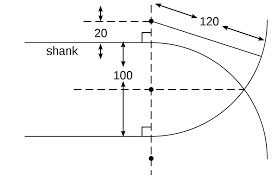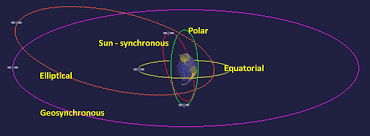Focus: GS-III Science and Technology, Prelims
Why in news?
GISAT-1, the country’s first earth imaging satellite in a geostationary orbit, will be launched in the evening of March 5 from the Sriharikota launch centre.
Medium-lift GSLV launcher numbered F10 would orbit the 2,275-kg spacecraft.
Details
- Operating from its geostationary orbit [at around 36,000 km from earth] GISAT-1 will facilitate almost realtime observation of the Indian subcontinent under cloud-free conditions and at frequent intervals
- It will be the 14th flight of the GSLV.
- A 4-metre diameter ‘ogive’ shaped payload fairing is being flown for the first time in this flight. (An ogive (/ˈoʊdʒaɪv/ OH-jyve) is the roundly tapered end of a two-dimensional or three-dimensional object.)

What is GISAT?
- (GISAT) Geo Imaging Satellite – The state-of-the-art earth observation satellite will operate from a geostationary orbit or a fixed spot and provide near to real-time observation data on the Indian subcontinent at frequent intervals under cloud-free conditions.
- GISAT-1 is the first of two earth observation satellites planned for launch. GISAT-2 will be launched soon as well.
- ISRO is planning the launch of 10 more satellites which would boost space and border surveillance, and crack down on terrorist infiltration.
- The geo imaging satellite will be launched by the Geosynchronous Satellite Launch Vehicle (GSLV-F10). This is the fourteenth flight of the GSLV.
What is GSLV?
- Geosynchronous Satellite Launch Vehicle (GSLV), is an expendable launch system operated by the Indian Space Research Organisation (ISRO).
- GSLV was used in thirteen launches from 2001 to 2018, with more launches planned.
- Even though GSLV Mk III shares the name, it is an entirely different launcher.
What is a Geostationary Orbit, and what the other types of Orbits?

Geostationary orbit
- A geostationary orbit, often referred to as a GEO orbit, circles the Earth above the equator from west to east at a height of 36 000 km. As it follows the Earth’s rotation, which takes 23 hours 56 minutes and 4 seconds, satellites in a GEO orbit appear to be ‘stationary’ over a fixed position. Their speed is about 3 km per second.
- As satellites in geostationary orbit continuously cover a large portion of the Earth, this makes it an ideal orbit for telecommunications or for monitoring continent-wide weather patterns and environmental conditions. It also decreases costs as ground stations do not need to track the satellite. A constellation of three equally spaced satellites can provide full coverage of the Earth, except for the polar regions.
Geostationary transfer orbit
- This is an elliptical Earth orbit used to transfer a spacecraft from a low altitude orbit or flight trajectory to geostationary orbit. The apogee is at 36 000 km. When a spacecraft reaches this point, its apogee kick motor is fired to inject it into geostationary orbit.
Low Earth orbits
- A low Earth orbit is normally at an altitude of less than 1000 km and could be as low as 160 km above the Earth. Satellites in this circular orbit travel at a speed of around 7.8 km per second. At this speed, a satellite takes approximately 90 minutes to circle the Earth.
- In general, these orbits are used for remote sensing, military purposes and for human spaceflight as they offer close proximity to the Earth’s surface for imaging and the short orbital periods allow for rapid revisits. The International Space Station is in low Earth orbit.
Medium low Earth orbit
- This orbit takes place at an altitude of around 1000 km and is particularly suited for constellations of satellites mainly used for telecommunications. A satellite in this orbit travels at approximately 7.3 km per second.
Polar orbits
- As the name suggests, polar orbits pass over the Earth’s polar regions from north to south. The orbital track of the satellite does not have to cross the poles exactly for an orbit to be called polar, an orbit which passes within 20 to 30 degrees of the poles is still classed as a polar orbit.
- These orbits mainly take place at low altitudes of between 200 to 1000 km. Satellites in polar orbit look down on the Earth’s entire surface and can pass over the North and South Poles several times a day.
- Polar orbits are used for reconnaissance and Earth observation. If a satellite is in polar orbit at an altitude of 800 km, it will be travelling at a speed of approximately 7.5 km per second.
Sun synchronous orbits
- These are polar orbits which are synchronous with the Sun. A satellite in a sun synchronous orbit would usually be at an altitude of between 600 to 800 km. Generally these orbits are used for Earth observation, solar study, weather forecasting and reconnaissance, as ground observation is improved if the surface is always illuminated by the Sun at the same angle when viewed from the satellite.




